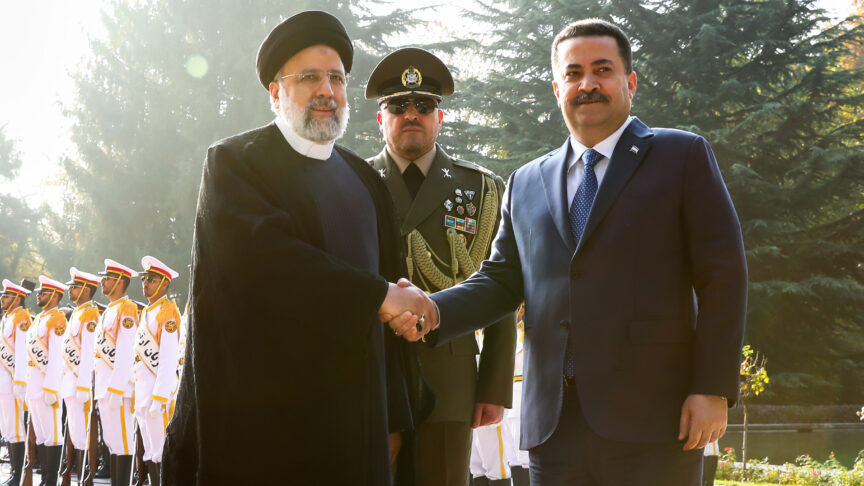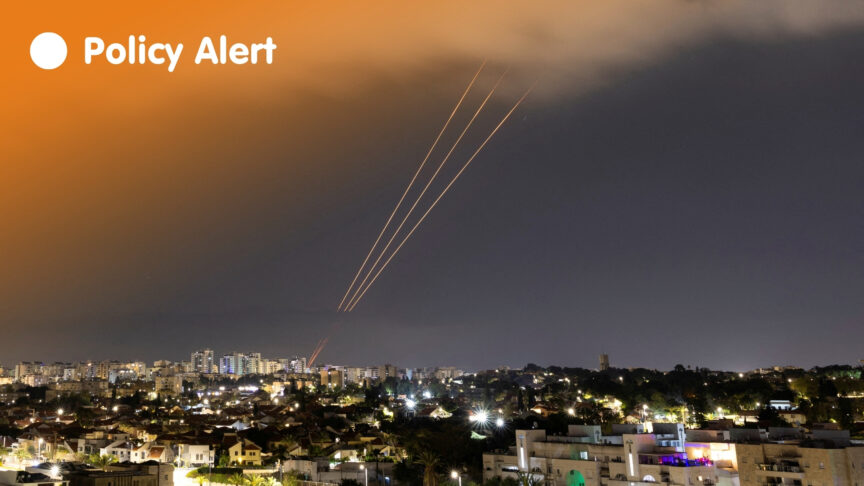Syria: New rules of the game?
As Syria’s civil war heads towards an end game, wider international fault lines are sharpening. Only Russia has the power to stop escalation but it is yet to choose its course.
Even by the standards of the long-standing Syrian conflict, the events of the past week have been dizzying: US clashes with pro-regime forces; Israel’s widening airstrikes and the Syrian downing of an Israeli fighter jet; deepening Turkish conflict with Syrian Kurds; all to the backdrop of intensified regime attacks on opposition pockets in Eastern Ghouta and Idlib.
But while these developments highlight the chaotic violence still characterising the war in Syria, they also point to the ongoing transformation of the conflict from a battle for control of the state to a theatre for increasingly overt confrontation between external actors. Syria’s civil war has long been a proxy conflict for wider interests but as the internal battle approaches an end-game the country risks being subsumed by even more direct international battles.
The most visible manifestation of this new phase is the deepening conflict pitting Iran, which has entrenched itself across Syria in support of Bashar al-Assad, against the US and Israel, both of which are set on containing Tehran’s widening influence. The Trump administration has openly adopted an anti-Iran policy and staked out an accompanying long-term, albeit limited, military presence in north-eastern Syria (where it is already present due to the anti-ISIS fight). This US positioning has been accompanied by an increasingly active posture by the Israeli government. Israel has grown ever more worried by the perceived Iranian threat on its north-eastern border and has intensified its campaign of military strikes.
Last week’s clashes saw pro-regime forces attack US troops along the Euphrates river, prompting a fierce US counter-offensive that killed an alleged 100 fighters. While the exact make-up of the attacking force remains murky, with some reports of a significant Russian mercenary presence, Iranian involvement is widely assumed. Days later Tehran deployed an Iranian drone into Israeli airspace, provoking an intense Israeli military response against Iranian targets in Syria but also resulting in Syria’s first successful downing of an Israeli fighter jet. These incidents represent the sharpest clashes yet across this emerging fault line.
For the moment no side appears to want to provoke all-out conflict, as demonstrated by mutual climbdowns following an initial series of reprisals. For Iran a head-to-head confrontation would threaten its enhanced position in Syria. Israel, meanwhile, would face the possibility of a barrage of missiles in any conflict, not just from Syria but also from neighbouring Lebanon given the cross-border presence of Iran’s key ally Hezbollah. From the US perspective there is no appetite to fully embrace another Middle Eastern war.
The law of unintended consequences means that any missteps could set off a dangerous conflagration
Recent events may now establish some moderating rules of the game similar to those maintaining an uneasy calm between Israel and Hezbollah in southern Lebanon. But the stage is set for sustained enmity across the Syrian theatre, – most pointedly between Tehran and Tel Aviv – and the law of unintended consequences means that any missteps could set off a dangerous conflagration, one that would be unlikely to stay within Syria’s borders.
Further north, meanwhile, a separate cycle of external escalation is also under way. Here Turkish forces are stepping up their fight against Syrian Kurds in Afrin as Ankara aims to prevent the establishment of an autonomous Kurdish zone. This now represents Turkey’s key strategic priority in Syria. Like the US, Turkey’s occupation of parts of the country is not new, but the intensified focus of its attention threatens wider reverberations. Turkey’s advance against core Kurdish-held areas is coming at a high price, with 10 soldiers killed and a military helicopter downed on one day alone last week.
Significantly, the campaign is likely to deepen the protracted Turkish-Kurdish conflict across northern Syria, but also within Turkey itself given Ankara’s ongoing fight against the PKK and that group’s cross-border ties with Syrian Kurds. It also risks placing NATO allies, Turkey and the US, in direct conflict. Turkey has demonstrated unprecedented hostility towards the US for arming Syrian Kurds under the umbrella of the Syrian Democratic Forces (SDF) and has threatened to move eastwards from Afrin towards Manbij, an SDF-controlled town with a US military presence. This would mark a significant escalation.
Set to this backdrop the question of Assad’s control of the state – long the central driver of conflict in Syria – appears increasingly marginalised. While both the US and Turkey have a long-stated goal of transition, neither is now meaningfully focused on this ambition (despite occasional rhetorical flourishes suggesting otherwise and an emerging US policy aimed at economically squeezing the Assad regime). Israel, meanwhile, has indicated no desire to inject a policy of regime change into its anti-Iran posture.
Damascus appears to be exploiting this dynamic to push ahead with attempts to forcefully consolidate control over as many opposition-controlled areas as possible. Its forces cannot move on US and Turkish-backed areas in northern Syria but they are unleashing unbridled devastation on Eastern Ghouta and Idlib. This intensified violence – and accompanying humanitarian chokehold – does not represent a deepening of the civil war, but a continued step towards its bloody denouement in Assad’s favour across core areas of the country.
This outcome is unlikely to be immediately challenged by the intensifying external overlay. But some still hope that widening foreign intervention will eventually rebound on Assad. Deepening US and Turkish interventions could, in time, result in stepped-up campaigns against regime influence, particularly if the US does get sucked into a deeper confrontation with Iran.
Much now depends on Russia, which, despite its role as the pre-eminent external military power in Syria, has largely sat on the sidelines of recent events. It has downplayed reports of Russian casualties and sought to avoid becoming a direct actor in the confrontations. Russia’s on-the-ground presence and singular ability to talk to all sides of this multilayered conflict gives it important veto power over much of what is happening but also a role as a possible arbiter. But to date there has been minimal mediating action aimed at blunting sharpening fault lines. Russia has instead apparently sought to play its different allies off each other – the Israelis versus the Iranians and the Syrian regime, the Kurds, and the Turks against each other – in a bid to further strengthen its own strategic position. This is a perilous game that will need to change if these forces are to avoid coalescing into something more dangerous.
The European Council on Foreign Relations does not take collective positions. ECFR publications only represent the views of their individual authors.


